Architecture
 From Conservapedia
From Conservapedia 
Architecture (from Latin architura, and that from Greek αρχιτεκτονική, architektoniki) is the art and science of constructing the built environment. The discipline that deals with the design, construction and ornamentation of fine buildings. Famous Cathedrals display some of the finest architecture ever.
"Architecture has recorded the great ideas of the human race. Not only every religious symbol, but every human thought has its page in that vast book." - Victor Hugo[1]
"Architecture and eloquence are mixed arts whose end is sometimes beauty and sometimes use." - Ralph Waldo Emerson [2]
Architectural types and styles classify architecture in terms of form, techniques, materials, time periods, contexts, region, climates, etc.[3] The Oxford English Dictionary defines architectural style as, "A definite type of architecture distinguished by special characteristics of structure and ornament"... The language of ornament employed throughout a building frequently identifies the architecture of a particular period. [4] Terms like Balustrade, Column, Cupola, Entablature, Façade, Gothic arch, Jamb, Masonry, Portico, Volute, or Wattle, are typical of this architectural profession.

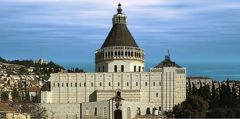
Architects are those who engages in the profession of architecture. Many of them along history have achieved notable success leaving outstanding works. Using the technology available and suitable materials like wood, stone or marble, glass, cement, steel, or pre-stressed concrete, architects have enhanced our environment. In the following periods some of this works or cultural symbols will be presented.
"Architecture is the will of an epoch translated into space". Ludwig Mies van der Rohe
Contents
- 1 Home architecture
- 2 Greek architecture
- 3 Roman architecture
- 4 Byzantine architecture
- 5 Middle Ages architecture
- 5.1 Romanesque architecture
- 5.2 Gothic architecture
- 6 Renaissance architecture
- 7 Baroque architecture
- 8 Rococo, Neoclassical and Federal style
- 9 Modern architecture
- 10 Oriental architecture
- 11 See also
- 12 External links
- 13 References
Home architecture[edit]
Leading upscale styles of architecture for homes in the United States are:
- Colonial
- Georgian
- Gothic
- Queen Anne
- Shingle
- Tudor Revival
The elegant "Prairie-style" architecture was co-founded by Frank Lloyd Wright.[5]
More affordable styles include "Cape Cod" architecture,[6] which is easy to produce on a large scale.
So-called "sustainable" architecture is preferred by environmentalists.[7]
Greek architecture[edit]


Greek architecture arose on the shores of the Aegean Sea and flourished in the ancient world. The most important works of Greek architecture were produced between 700 BC and 146 BC. Architects Callicrates, Mnesicles, and Ictinus flourished, and the Parthenon (Its most famous monument) and other great works were produced. The Parthenon was built using the golden proportion (0.618 : 1) by Ictinus, Callicrates and Phidias, ca. 440 BC.; there is a replica of it at Nashville, Tennessee. Another piece of Greek architecture was the magnificent Temple of Artemis at Ephesus, one of the Seven Wonders of the Ancient World; Paeonius and Demetrios were the architects of this temple in ca. 250 BC. The Temple of Nike by Callicrates, ca. 420 BC., was the earliest Ionic building on the Acropolis.
Greek architecture has a strong influence on Western Culture even today.
Roman architecture[edit]


| Art in Roman Architecture appears in such varied purposes. The Romans were the first people to treat architecture as a minister to the numberless needs of a great nation. Before them, except in the Greek theatres, it had served the gods, the royal families, and the dead, alone. [1] Some examples of Roman Architecture are: The Pantheon (the best-preserved building in Rome), The Colosseum, the aqueducts like The Aqua Appia, The Hadrian's Wall, The Antonine Wall, and The Library of Celsus designed by the Roman architect Vitruoya in the Roman city of Ephesus. |
| “ |
By the middle of the fifteenth century, scholars in the curia--like the brilliant architect Leon Battista Alberti and the erudite scholar Flavio Biondo -- knew the ancient city (of Rome) better than anyone had for a thousand years. Artists recorded the ruins that survived, broken and ivy-covered, and reconstructed the original palaces and temples in all their crisp-edged glory. Architects tried to grasp the rules and methods of the Roman builders. When ancient works of art, like the Laocoon, came to light they immediately became famous and influential, finding prominent places in the sculpture collections that adorned the Capitoline hill, the Belvedere court of the Vatican, and many private houses. Drawn and printed images of them circulated throughout Europe and scholars and artists made pilgrimages to Rome to see them.[8] |
” |
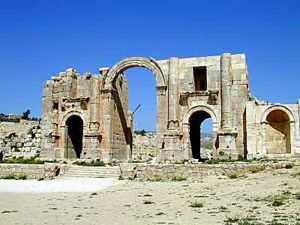
One of the featured element of the Roman architecture was the "arch semicircular". Roman arcades were made with pilasters attached to piers carrying an entablature, or in some cases the arcs are resting directly upon their capitals. The Colosseum and the aqueducts are examples of this technique. Romans also introduced the triumphal arch to celebrate military victories.
The Pantheon and the ruined Temple of Peace were the two Roman edifices which indicated the progress of the Romans towards the invention of an architecture distinctively their own. [9]
Architect Vitruvius wrote the earliest work on the subject of architecture "De architectura", known today as The Ten Books on Architecture. Vitruvius' fundamental principles of architecture were firmitas, utilitas, venustas (firmness, commodity and delight).
Byzantine architecture[edit]
Byzantine architecture is mainly the characteristic architecture of the Byzantine Empire. It presents a mixed style, i.e. a style composed of Graeco-Roman and Oriental elements which, in earlier centuries, cannot be clearly separated. [2] Byzantine's advancement in developing the dome created a new style in global architecture. Another advancement was the development of basilicas.[3] Byzantine church architecture is concerned almost exclusively with a decorated interior. In interiors, marble and mosaic were used broadly to make a complete lining for a rough carcase and mouldings were replaced by decorative bands formed in the mosaic. [4]
The Basilica of Sant' Apollinare located in Classe, Ravenna, Italy, is known for its exceptional Byzantine mosaics; [5] it is an example of Early Byzantine architecture.

The Basilica of Sant'Apollinare, V century.
Hagia Sophia, completed in 537 AD, is the most famous example of all Byzantine Architecture. The architects of St. Sophia were Asiatics: Anthemius of Tralles and Isodorus of Miletus. [6] Another outstanding example of Byzantine architecture is St. Mark's Basilica (830 AD) in Venice.
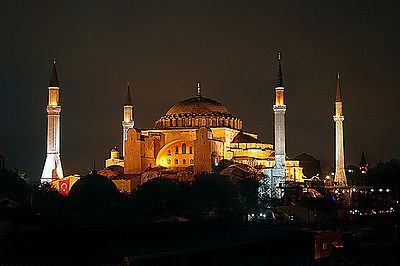
Middle Ages architecture[edit]
Architecture in the Middle Ages or Medieval architecture can be seen in the majestic churches built during that era. There were two main styles: Romanesque and Gothic.
Romanesque architecture[edit]

Romanesque architecture was a continuation of the Roman tradition of building. This architecture is characterized by thick walls, rounded arches and small windows. Some examples of this period are: San Miniato al Monte, Firenze, Italy, 1018–1062, Notre Dame le Grande, Poitiers, France, early 12th century, The Basilica, Paray-le-Monial, France, 1090–1110, and Ste. Marie, Souillac, France. c. 1130.


Great Lavra Monastery, Byzantine age, Macedonia.
Gothic architecture[edit]

Gothic architecture, consisted of taller, perpendicular structures with long windows, pointed arches and "flying buttresses" (stone supports on the outer walls of churches); the pointed spires of this style is said to reflect the desire of people of the Middle Ages to grow closer to God, reaching towards heaven and away from the earth. Spires were a source of pride for churches, and stressing the limits of architecture resulted in frequent collapses of church buildings - much like miniature Towers of Babel. Tall windows allowed sunlight to illuminate the interior, unlike Romanesque architecture, in which windows were small and interiors were dim. A particularly stunning example of Gothic architecture is the Notre Dame in Paris, on which construction began in 1163 during the reign of Louis VII, and was completed about 200 years later in about 1345. The Notre Dame features a beautiful stained-glass "rose window," which is another distinguishing characteristic of Gothic churches.
The Roman arch was followed by the pointed Gothic arch or ogive.
Renaissance architecture[edit]

The Renaissance period goes from 1400 to 1620 AD. This architecture was inspired by artists' works of classical Greece and Rome. Some famous architects were Filippo Brunelleschi, Michelangelo Buonarroti, Andrea Palladio, Michelozzo Michelozzi, Leon Battista Alberti, Baldassare Peruzzi and Giacomo Barozzi da Vignola. Juan de Herrera (1530 - 1597) and Juan Bautista de Toledo in Spain worked in The Escorial, the colossal monastery of Philip II. The Basilica of St. Peter in Vatican City by Donato Bramante, Michelangelo and Carlo Maderno, is a masterpiece of this period. Works of Alberti included The Palazzo Rucellai and the decoration of the façade at Santa Maria Novella, in Florence. Vignola and his pupil Giacomo della Porta, were involved in the construction of Il Gesu, Motherchurch of the Society of Jesus, at Rome.
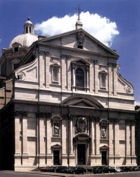

The Louvre, by Pierre Lescot (1515 - 1578), at Paris, is a good example of this style.
Baroque architecture[edit]
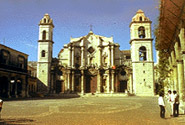
This period goes from 1650 to 1750 AD. The roots of Baroque architecture were in Italy, and from there it spread to France, England, Spain and America. The ornament elements of this period are presented in more complex ways and imagery.
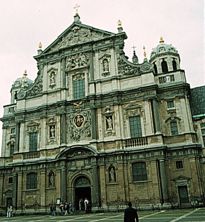
Some examples of this period are: Piazza of St. Peter's, by Gianlorenzo Bernini, at Vatican City; The Palace of Versailles, by Andre Le Notre, Louis Le Vau, Jules Hardouin-Mansart, Charles Le Brun, Robert de Cotte, and Ange-Janques Bagriel, at Versailles, France; The Christ Church, by Nicholas Hawksmoor, at Spitalfields, London, England; The Opera, by Charles Garnier, at Paris; Church of St. Charles Borromeo, by Pieter Huyssens, S.J., at Antwerp; Sant'Andrea al Quirinale, by Bernini, at Rome, Italy; Laurentian Library, by Michelangelo, at Florence, Italy, and Galleria Vittorio Emanuele, by Giuseppe Mengoni, at Milan, Italy.

Rococo, Neoclassical and Federal style[edit]

Baroque led to the exuberant Rococo style. Rococo began in the eighteenth century at Versailles like an art of exquisite refinement, graceful and linearity. Architects like Robert de Cotte, Gilles Marie Oppenord, and Jacques Ange Gabriel were representative of this style. Later, in the mid-18th century, Neoclassical architecture began as a reaction against the Rococo ornament. It was inspired in the architecture of Classical Greece. In America, Neoclassical architecture conducted to Federal style. Thomas Jefferson, Benjamin Latrobe, and others derived their building style more directly from Palladio. [10]
Thomas Jefferson was among the many people who submitted a plan for the White House. His design, however, was not chosen. Instead, James Hoban, an Irish immigrant architect living in Charleston, South Carolina, won the competition and a $500 prize, with a design modeled after Leister House in Dublin, Ireland.[11]
Architecture has recorded the great ideas of the human race. Not only every religious symbol, but every human thought has its page in that vast book. Victor Hugo.
Modern architecture[edit]

In this period several styles have appeared, like: Deconstructivism, Formalism, Modernism, Expressionism, Neo-expressionism, Structuralism, Postmodernism, Functionalism, International Style, Brutalism and The Bauhaus school. (Bauhaus is a term coined by Architect Walter Gropius and means house for building).
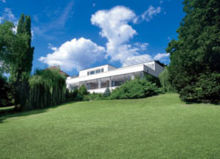
The value of design lies in the ability of a space, a building, or a functional object to have an effect on people - to shape behavior, to inspire, to challenge, to inform, to comfort, to engage, and to stimulate. Jonathan Barnes.
Some works of outstanding architects:

Gustave Eiffel

Antonio Gaudi

Ludwig Mies van der Rohe - Philip Johnson

Le Corbusier

Frank Lloyd Wright

Richard Neutra

Luis Barragan

Victor Gruen

Jörn Utzon
Abraham Zabludovsky

Cesar Pelli

Norman Foster

Richard Rogers, Renzo Piano, and Gianfranco Franchini

Santiago Calatrava and Felix Candela
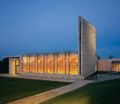
Joan M. Soranno and John Cook


"Architecture is an art when one consciously or unconsciously creates aesthetic emotion in the atmosphere and when this environment produces well being." Luis Barragan.
Oriental architecture[edit]
The styles of Oriental architecture have their own characteristics but the interrelation with Western-style architecture has been important. Countries like China, Japan, and India present wonderful examples of this art, so rich in symbolism.

Taj Mahal India

The Shahjahani Mosque in Thatta, Pakistan

Great Wall China

National Stadium, Beijing China

Saint Sophia Turkey

The gate of Itsukushima Shrine Japan

Japanese architecture Japan
"When you look at Japanese traditional architecture, you have to look at Japanese culture and its relationship with nature. You can actually live in a harmonious, close contact with nature - this very unique to Japan". Tadao Ando.

Moorish Kiosk of Santa María la Ribera, Mexico City, 1910.
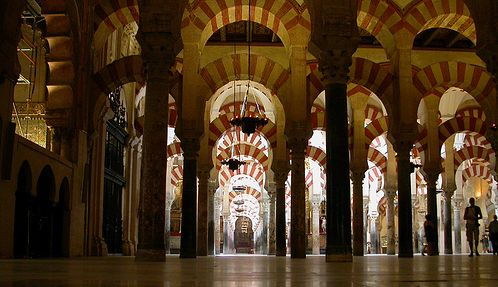
Cathedral - Mosque, Cordova, Spain.
Architecture in Spain is an exotic mix of early Moorish influences, European trends, and surreal modernism. [12]
See also[edit]

- Architectural Sculpture Gallery
- Famous Architects
- Victorian Architecture
- Pantheon, Paris
- Obelisk
- Washington Monument
- Empire State Building
- Golden Gate Bridge
- Architect of the Capitol
- Oriental art
- World treasures
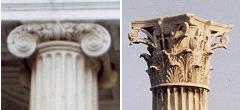
External links[edit]

- Periods and Styles
- A Menu of Architectural Types
- Renaissance and Baroque Architecture
- GREEK REVIVAL DOMINATED AMERICAN ARCHITECTURE FROM 1818 TO 1850
- American Architecture
- Architecture Timeline
- HISTORY OF WESTERN ARCHITECTURE
- History of Landscape Architecture
- Great Buildings Collection
- Oriental Architecture
- Chinese Architecture
- Asian Historical Architecture 19 Asian countries included.
- Buddhist Art and Architecture
- Architecture Links on the World Wide Web
- AMERICAN ARCHITECTURE AWARDS
- Museum of Architecture and Design THE CHICAGO ATHENAEUM.
- 25 Stunning Architectural Facades.
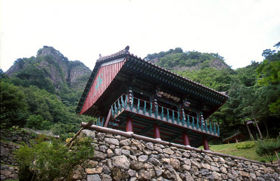
References[edit]
- ↑ https://www.brainyquote.com/quotes/victor_hugo_131134
- ↑ Ralph Waldo Emerson: Thought on Art
- ↑ A Menu of Architectural Types
- ↑ Style by Phoebe Crisman, Assistant Professor, University of Virginia, School of Architecture.
- ↑ https://www.thespruce.com/frank-lloyd-wright-homes-5078664
- ↑ https://www.hgtv.com/design/decorating/design-101/cape-cod-architecture
- ↑ https://www.thespruce.com/what-is-sustainable-architecture-4846497
- ↑ Learning to Read Rome's Ruins
- ↑ Roman Arch and Columns
- ↑ Architecture
- ↑ The White House.
- ↑ Architecture in Spain.



Wherever man exists, he finds the need to redesign, to recreate the world. A more beautiful world, purer, sweeter smelling and more colorful. A garden is probably the spot where the hopes for civilization are best captured. THE ENCHANTED GARDENS OF THE RENAISSANCE.
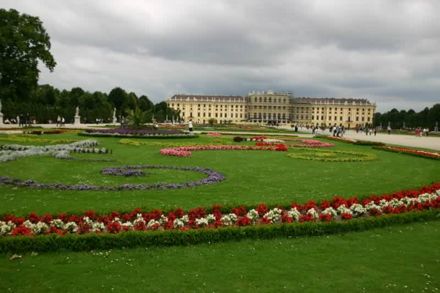
Schönbrun Palace and gardens, Germany.
Categories: [Art] [Engineering] [Architecture] [Ancient World Wonders] [Tourist Attractions] [Housing] [Featured articles] [Construction]
↧ Download as ZWI file | Last modified: 02/17/2023 22:04:13 | 206 views
☰ Source: https://www.conservapedia.com/Architecture | License: CC BY-SA 3.0
 ZWI signed:
ZWI signed:
 KSF
KSF